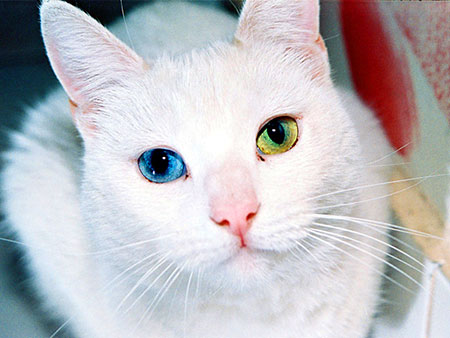
You’ve probably seen or at least heard about animals with two different eye colors, now here’s a batch of them with the rare heterochromia condition. For those who don’t already know, this “is a result of the relative excess or lack of melanin (a pigment).” Continue reading to see more.
Heterochromia of the eye (heterochromia iridis or heterochromia iridum; the common wrong form “heterochromia iridium” is not correct Latin) is of two kinds. In complete heterochromia, one iris is a different color from the other. In partial heterochromia or sectoral heterochromia, part of one iris is a different color from its remainder.
Eye color, specifically the color of the irises, is determined primarily by the concentration and distribution of melanin. The affected eye may be hyperpigmented (hyperchromic) or hypopigmented (hypochromic). In humans, usually, an excess of melanin indicates hyperplasia of the iris tissues, whereas a lack of melanin indicates hypoplasia.
